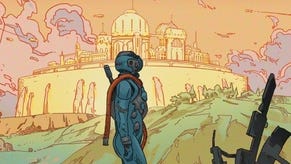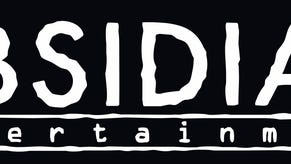Neverwinter Nights 2 toolset
Bad workmen blame their tools. And not reading the manual.
The map won't scroll.
Normally admissions of complete incompetence are something to be avoided when writing about games, in favour of cultivating an aura of general infallibility. Obviously I completed the game on Expert, blindfolded, while having Rossignol flick my earlobe in an attempt to distract me from the task at hand. Do you think I'd dare write a review of Totally Average Ultra-Hyped Big Franchise Game Which Has All The Fanboys In The World without having done that? This is a little different. We're having a look at the toolset that comes with Neverwinter Nights 2, which we deliberately didn't consider. Here incompetence is absolutely key to my qualifications in writing this.
You see, the Neverwinter 2 toolset is enormously powerful. Clearly, as Obsidian actually made the game with it. However, almost all major PC games come with some manner of editing tools that they used to make the game with. It's not actually just the top-end of the power that's relevant. The promise with Neverwinter Nights is towards the bottom end, the level of power it puts in the hands of those of us whose native language isn't assembly.
To see how good NWN is at that I did the following. Firstly, work my way through the basic tutorials including, skipping anything which looks like a bit like hard-work. Secondly, start a clock and see what manner of adventure I can construct in two hours precisely. And thirdly, write about it.
Admissions about my prior skill in these: I once programmed a game in Easy Amos back when I was teenage and had more brain cells. I was kind of Project Lead on a moderately successful Deus Ex mod, but didn't actually do any of the map editing or similar (just did all the conversations). And I know the Dungeons and Dragons rules with a splash more than a layman's familiarity, so I won't be wasting time wondering what's the difference between Constitution and Strength. Finally, I have a splash of experience with the Neverwinter 1's Aurora construction kit, where I spent about an hour and a half fiddling with it when it came out. Clearly, I remember nothing of that, and certainly not how to scroll the map.
Anyway - onwards.

The top of the actual tutorial document helps by providing a big list of what's new to the toolkit, handily divided into World Creation and Usability sections. In the first, elements like Terrain Painting, uniquely generated trees, weather control, dynamic day cycles, increased armour customisations (but they spell it "Armor", because they're uppity colonials), an editor for the special effects, the ability to scale objects (which I kind of fall in love with later), Global Scripting (which I read and know in my heart of hearts I'll never get) and better camera controls for cinematics. In terms of usability, there's a lot of streamlining going on. For example, the customisable workspace element allows you to place tools better, and a better conversation editor allows you to "pass parameters to scripts and assign multiple conditional and action scripts", which sounds terribly exciting. Yes. Also, you're able to have multiple working areas open at once - for example, typing a conversation while having a couple of maps available, which even for a newbie like me is an obvious boon. Also, there's the ability to create plugins a la Photoshop, which has the aura of something considerably beyond the boundaries of this little piece.
Skimming down past the "What is a Module" sections - it's a module, of course! - I hit the important issue of making a first area. Create an outdoors area, eventually locate the "Start Position" function and save. Load up the game and... OMFG!!! I'm in a game within five minutes. Marvellous.
The tutorials progress through the basics of placing objects, scenery, putting things in containers, putting down monsters, setting up basic conversations, creating custom objects and... well, seriously. You'll have noticed by now that we've actually got the absolute basics of getting an adventure working. Which is what I was hoping for. When I was conceiving this exercise, I knew that we'd be able to make something in two hours. If this was Valve's Source Engine, I'm sure I'd have worked out how to put down some corridors, some guns and a few people to shoot - the perennial joy of constructing a first-person shooting game is how relatively easy it is to create something which, at some ridiculously reduced level, resembles the game proper. Conversely, the problem with - say - editing Deus Ex is that just lobbing some things down in a mass doesn't actually create something that works in any noticeable way like the main game, since it's so much more reliant on exploration, plot and so on.
A role-playing game like Neverwinter Nights is in a similar situation. Sure, a dungeon could be easy to do, if the underground levels work in the way that NWN does (insides are made from having large squares which click together, in some manner of subterranean-despot interior-decorator Lego-esque manner), but a dungeon isn't an adventure. An adventure needs a situation, a plot, a twist, a reason for doing things. And already, in the hour or so I've been working through the tutorial, I have the skill to do something at a basic level.













